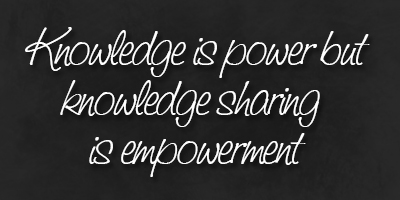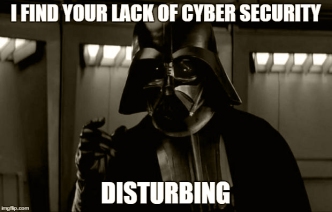It starts with one thing: Information Systems. What about it? What makes it relevant in businesses? Who takes responsibility for it? Why do we even have to learn Information Systems and how does it affect my daily life? What does IT have to do with my life? All these and other IT-related questions were boggling in my mind during the first day of our class in Management 286 – Management Information Systems.
All I know is that technology-related matters are interesting since technology becomes a necessity, especially for us millennials, as it provides ease and comfort in our everyday tasks, whether at home, office, basically anywhere in the world. And for businesses, IT becomes an investment that provides an advantage over competitors thus managers have the responsibility to identify opportunities to apply IT, smoothing its successful implementation and mitigating the various risks associated with it. Before investing into information technology systems, every business must have a strategic plan. How will IT impact the company’s vision and mission? Is the system in line with the company’s goals and objectives? With these, managers set strategies such as outsourcing to achieve lower costs, improve organizational focus, and increase the probability of IT success.
It’s so unreal not to have problems regarding information systems, numero uno of which is security. Since information systems contain a lot of the company’s viable data, some even rely heavily on there is structure, good internal controls and management accountability must be embedded in the organization to avoid these risks. There’s always an argument as to who is accountable for such risks. It must be emphasized that the responsibility of IT governance is not shouldered by the IT management but of the executive management. We learned that good IT governance will help managers achieve high value from their IT investment while managing the associated risks.
Communication must not be ignored as it is one of the factors in the success of an IT project. The use of collaboration tools, wireless networks and other business intelligence tools enable people to communicate and interact with one another anywhere effectively. Aside from effective communication, knowledge can also be shared. Some business practice knowledge management to increase awareness, foster learning, expedite collaboration and innovation, and exchange insights. Because IT will not work without the people utilizing and implementing the system, and that not everyone gets to stay in the organization for so long, the company must be able to pass their expertise to those who will replace them.
Going back to the factors of success in IT implementation, no matter what business collaboration tools organizations use, internal controls they establish, without a solid foundation everything else will be useless overall. Enterprise architecture provides the foundation for achieving the company’s vision and mission. It requires defining a future structure for an organization’s process, information systems, and personnel so that they align with the organization’s core goals and objectives.
Our Management Information Systems subject ended with the topic on computer ethics and responsible use of social media. Aside from what is generally accepted in the society, it is important to set rules within the organization to establish discipline and proper use as well as avoid risks. Users of social media must be responsible for their actions as each action bears a consequence that may affect not only themselves but other people or even the organization.
To answer the question ‘does IT really matter?’, in the end IT DOES MATTER. You are wrong Chester Bennington (refer to Linkin Park’s ‘In The End’ song).


Reference: Information Technology for Managers by George W. Reynolds

 I could still remember when “Connecting People” was the famous tagline for the ever-famous Nokia phones. It was then when calls and text messages became popular, enabling us to keep in touch with our families and friends. Today, we have the world at our fingertips. Literally, with the touch of a fingertip or with just a click of the mouse, we can be connected to anyone to any country. With the introduction of Social Media, everyone is available 24/7 and long distance communication becomes less of a hassle now. To say the society we live in is technologically advanced would be an understatement. With everything becoming available to us, it seems as if anyone can document, broadcast, and stream just about anything.
I could still remember when “Connecting People” was the famous tagline for the ever-famous Nokia phones. It was then when calls and text messages became popular, enabling us to keep in touch with our families and friends. Today, we have the world at our fingertips. Literally, with the touch of a fingertip or with just a click of the mouse, we can be connected to anyone to any country. With the introduction of Social Media, everyone is available 24/7 and long distance communication becomes less of a hassle now. To say the society we live in is technologically advanced would be an understatement. With everything becoming available to us, it seems as if anyone can document, broadcast, and stream just about anything.























